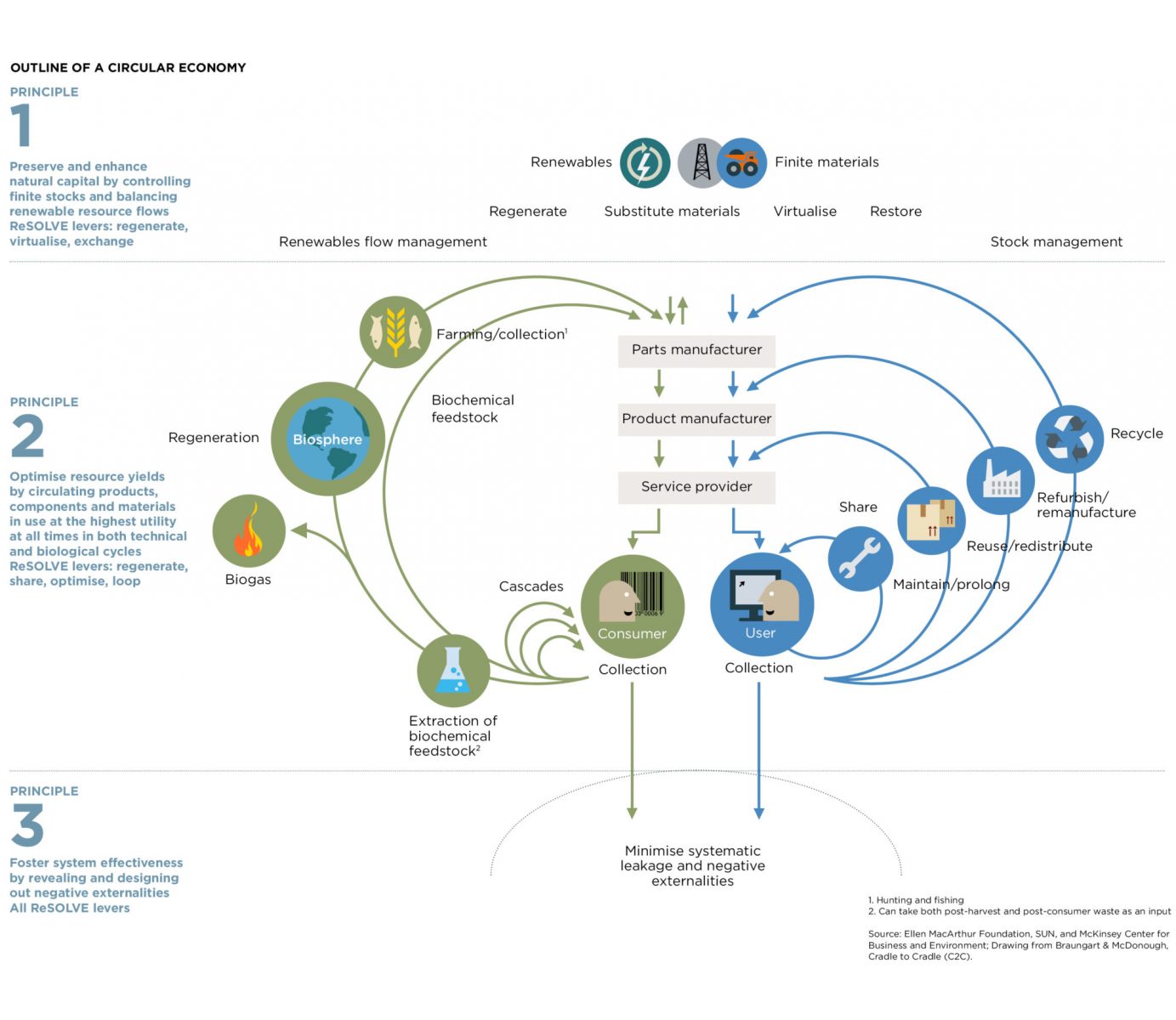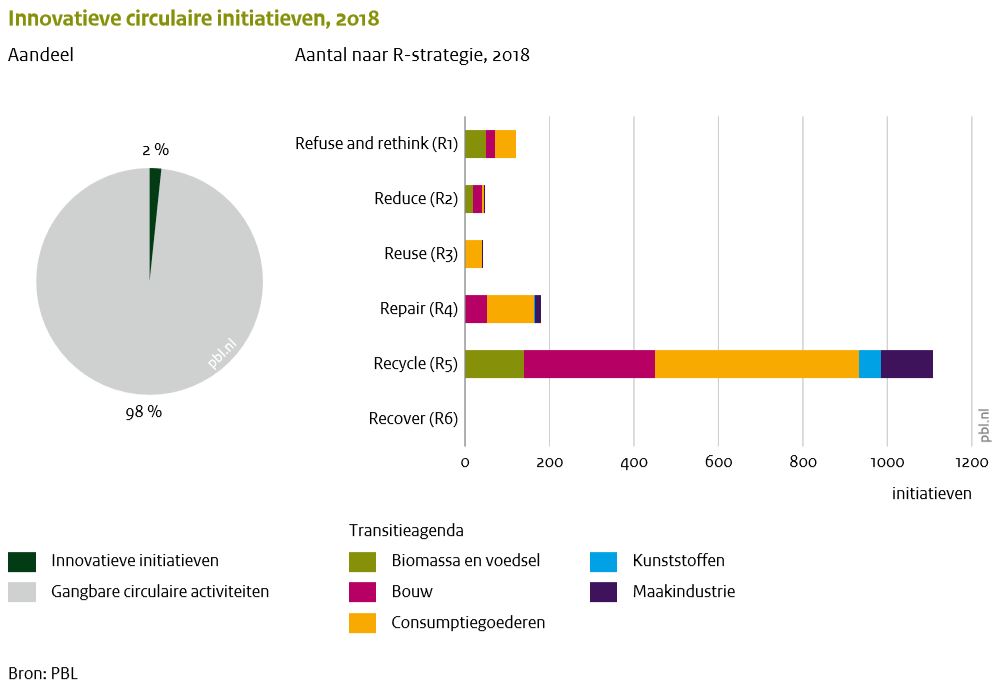What’s that he’s saying? We should stop recycling?! Surely we should be recycling if we want to move towards a circular economy? Yes, of course we should. And yet no, we shouldn’t. Because in my view, recycling – reuse at the raw material level – is often wrongly elevated and seen as the highest form of circularity. Our focus can – and must – be much stronger on consuming less, reusing more and the circular design of products and materials. I’d like to explain why.
Let me first make it clear that the recycling of valuable and scarce raw materials is essentially good in order to ensure that these raw materials retain their value. This is the only option for many products and is therefore always preferable to sending raw materials to landfill or incinerating them, even if we use the process to produce ‘green energy’. What concerns me, though, is the strong focus on recycling in our innovation towards a more circular economy.
Understanding the underlying purpose
To explain this, I think it’s a good idea to start by getting to grips with the purpose of a circular economy. In my opinion, a circular economy is primarily an economic system in which value retention of raw materials is central. A number of theoretical models have been developed to make this a reality, such as Jacqueline Cramer’s ‘10R-model’ or the Ellen MacArthur Foundation’s butterfly, in which the different R levels (Repair, Reuse, Refurbish, Recycle, etc.) are found (see image).

The contribution of recycling
Yet I still hear a lot about recycling when it comes to circular performance and in governments’ and companies’ objectives. This focus on recycling can be seen in a study by the Netherlands Environmental Assessment Agency (Planbureau voor de Leefomgeving, PBL, in Dutch), ‘Circular economy on the map’ (in Dutch), which shows that of all the R levels (or R strategies, as the report calls them), recycling is the main focus for most of the recent innovative activities carried out in the circular economy field.
Why recycling only makes a limited contribution to the circular economy

The PBL analysis shows that more than 70% of the innovative circular activities being carried out in 2018 are at the R level “recycling”. This means we are currently focusing on recycling products into raw materials in order to use them to make new products, yet this approach isn’t considered the ‘most circular’. I don’t think this development is positive, and here’s why:
• Traditional ‘recycling’ comes out of and benefits a linear economy
The recycling industry has existed for a long time and has traditionally been optimized for dismantling and extracting materials from products that were designed linearly – those that are unsuitable for reuse, that can’t be disassembled or that are difficult to dismantle and can therefore only retain (part of) their value through recycling. Since the recycling industry has optimized its costly processes on this basis, it seems that the industry can’t maintain its own revenue model by directly benefiting from initiatives at a higher R level.
• We often incorrectly consider ourselves ‘rich’
Many organizations that are working on circularity in their own business operations are quick to call themselves ‘circular’. But in reality, they usually just recycle their waste, which they have often been doing for years. It’s easily forgotten that in practice, much of this waste is ‘downcycled’, simply because the products sent to be recycled are not designed for reuse or recycling. This means many companies are inaccurately present themselves as circular, often unwittingly, while in practice they’re not doing anything new. And, of course, linear products (which are often made of virgin raw materials) are still being purchased, designed, produced and ultimately recycled.
Stop recycling, or give it a crucial role in the circular economy?
Do we have to stop recycling completely? No, absolutely not. After all, there are still many products in circulation that are designed in such a way that makes recycling the only option. And recycled raw materials are almost always preferable to virgin raw materials when making new products. But I do think that the industry needs to consider whether what we’re calling circular is in fact circular in the way it could – and should – be. Creating a circular economy will only be possible if we look differently at our products, ask different questions and take a closer look at our revenue models. But with more and better recycling going on, this isn’t going to happen quickly.
Despite my criticism, I do believe that the recycling industry can play a crucial role in achieving a circular economy. Knowledge about products and their composition, raw materials and technology is literally and figuratively worth gold when it comes to the circular design of new products. By making this knowledge available to producers and working with them on things like product design, we can prevent unnecessary recycling and move a step closer to a circular economy. Fortunately, more and more recycling companies are already making changes in this direction.
So don’t just stop recycling; before you recycle a product or material, consider whether you can take it to one of the higher R-levels – refuse, rethink and refurbish – and design your products and processes with this in mind. Only then will we make the transition to a truly circular economy.